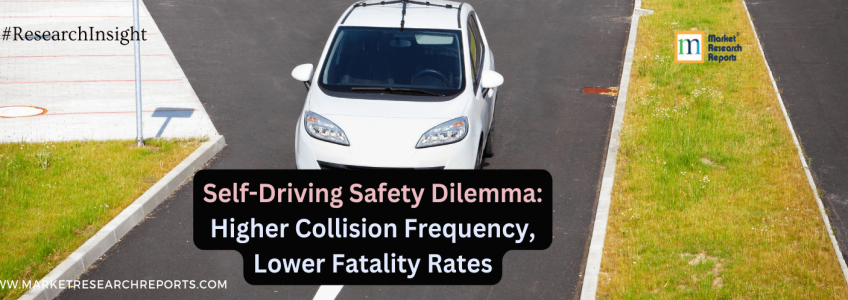Self-Driving Safety Dilemma: Higher Collision Frequency, Lower Fatality Rates

Table of Contents
As of 2024, the data on self-driving car accidents presents a nuanced picture. Self-driving vehicles, or vehicles using autopilot, tend to have a higher overall accident rate compared to manually operated vehicles. Specifically, these vehicles have 9.1 accidents per million miles, compared to 4.1 for human-operated vehicles. However, it's important to note that self-driving car accidents often occur at lower speeds, resulting in fewer fatal accidents.1
The National Highway Traffic Safety Administration reported that from July of the previous year to May of the current year, there were 392 accidents involving self-driving technologies. Of these, a significant proportion, around 273, involved Tesla vehicles. This data underscores the growing prevalence of self-driving systems on American roads and the regulatory efforts to monitor their safety record. Despite their increasing presence, concerns persist regarding the overall effectiveness of autonomous driving technology in reducing traffic collisions.2
In 2023, California reported a total of 612 autonomous vehicle collisions, including at least 17 fatal incidents. This data included serious injuries and property damage. The National Highway Traffic Safety Administration outlined 11 fatalities over four months in 2022 due to self-driving accidents, with the majority associated with Tesla vehicles. This data suggests that while autonomous vehicles have the potential to improve road safety, there are still significant challenges and risks associated with their deployment. 3
1 . Challenges for Manufacturers
- Sensing the Surroundings: Self-driving cars rely heavily on sensors to perceive their environment. However, these sensors face difficulties in varying conditions such as fog, rain, or at dusk. To navigate safely, these vehicles need reliable and cost-effective sensors and detailed maps for contextual understanding. Researchers are exploring ways to enhance sensor capabilities and integrate real-time data for accurate mapping.4
- Handling Unexpected Scenarios: One of the significant challenges is the vehicle's ability to interpret and react to unforeseen situations, such as a pedestrian suddenly crossing the road or a traffic officer directing traffic. Machine learning algorithms are being developed to enable cars to make abstract interpretations of such scenarios, but this remains a complex task.
- Human-Robot Interaction: As self-driving technology advances, a mix of fully autonomous and semi-autonomous vehicles will coexist. This raises questions about the interaction between human drivers and automated systems, particularly regarding the handover of control in semi-autonomous vehicles. Ensuring smooth, safe transitions between human and machine control is a critical area of focus.
- Computational Challenges: Self-driving cars must process vast amounts of data from cameras, LIDARs, radars, and GPS to navigate safely. This requires high-speed computers and sophisticated algorithms capable of real-time decision-making. The development and refinement of these algorithms, which must continuously learn from their environment, is a significant technical hurdle.
- Regulatory and Safety Standards: The lack of established standards for testing and certifying autonomous vehicles poses another challenge. The National Institute of Standards and Technology (NIST) is working on creating frameworks for measuring automated vehicle performance, including safety metrics and testing scenarios for different levels of automation. However, a comprehensive and universally accepted framework for evaluating and certifying these vehicles is still in development.
- Integration with Existing Technologies: The integration of autonomous cars with current vehicular technologies is crucial. This includes the development of Vehicular Ad-hoc Networks (VANETs) for vehicle-to-vehicle communication, which is essential for the coordination and safety of autonomous vehicles in traffic.
- Cost and Market Acceptance: The high cost of developing and deploying self-driving technology is another challenge. Despite significant investments by automakers, achieving a balance between technological advancement and cost-effectiveness is critical for widespread market acceptance.
- sensiblemotive.com/self-driving-car-statistics/
- news.yahoo.com/self-driving-car-systems-were-142925251.html
- ehlinelaw.com/blog/driverless-car-accident-death-statistics-to-2023
- sciencenews.org/article/five-challenges-self-driving-cars





